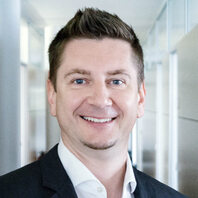Laser cutting is suitable as a non-contact cutting process for almost all materials, but especially for complex two- or three-dimensional shapes and when fast and precise processing is required.
Laser cutting is the contactless cutting of solids with the aid of pulsed or continuous laser radiation. Almost all materials, hard-brittle materials such as glass or metal and also flexible materials and roll material, can be cut with the laser.
Flexible materials include flexible printed circuit boards (FPC), textiles, leather, FRP fabrics, and electrode foils and separators used in the production of lithium-ion batteries.
Our machines and systems are therefore specially designed to minimize burr formation (burr) and deliver a perfect cut edge. Integrated inspection systems ensure that cutting takes place with previously determined, optimal parameters.
The laser chamber of the Manz laser cutting system is equipped with a patented and flow-optimized extraction and supply air. Particles and other contaminants that can influence the quality of the end product are removed.
Laser cutting of electrodes (anode and cathode) requires exceptional precision in the manufacture of battery cells, as the quality of the laser cut edge has a direct impact on the function and performance of the subsequent battery cell.
With regard to the cutting geometry, there are no limiting sizes except for the maximum electrode size of 120 x 210 mm. Long spline curves, but also radii in the 100 µm range and other complicated geometries, are cut at cutting speeds of up to 2m/s.
Our machines and systems are suitable for laser cutting of hard-brittle materials, such as silicon, sapphire, glass or ceramics, or of plate-shaped materials, such as some sheet metal (ferrous and non-ferrous materials), plastics or printed circuit boards (PCB).
Laser cutting is particularly suitable for fast, precise and efficient production. Especially for smaller batch sizes, changing formats or layout changes, the laser process is the better alternative compared to mechanical cutting. Even very fine contours can be cut with high precision and without mechanical stress.
The substrate size of the material to be processed can range from 2-inch wafers to Generation 8.5 glasses (2,200 x 2,500 mm), and the workpieces can range in size from square millimeters to square meters.
Laser notching is an important process in the production of lithium-ion battery cells. In this process, the anode or cathode material is unwound from the roll, cut "on-the-fly" using laser radiation and then rolled up again. Compared to mechanical cutting, laser notching primarily offers greater flexibility in terms of cell formats and tab geometry.
This manifests itself in the way that only minor hardware changes have to be made when changing the cell format, so that downtimes are reduced to a minimum. Likewise, the lengths of the electrodes as well as the individual distance between the electrodes can be freely selected (progressive notching). Especially for prismatically wound cells, "progressive notching" is highly interesting.
In addition to the number of tabs, the width, length and angle can also be varied individually for each tab. The individually set tab geometries offer a technological advantage especially for cylindrically wound cells.
In addition, simple cuts in the carrier film, such as those used for the novel "tabless design" for 46xx cylindrical cells, can be realized
 Dmitrij
Walter
Head of Laser Processing Technology
Dept. Laser Processing
+49 7121 9000 0
laser@manz.com
Dmitrij
Walter
Head of Laser Processing Technology
Dept. Laser Processing
+49 7121 9000 0
laser@manz.com


